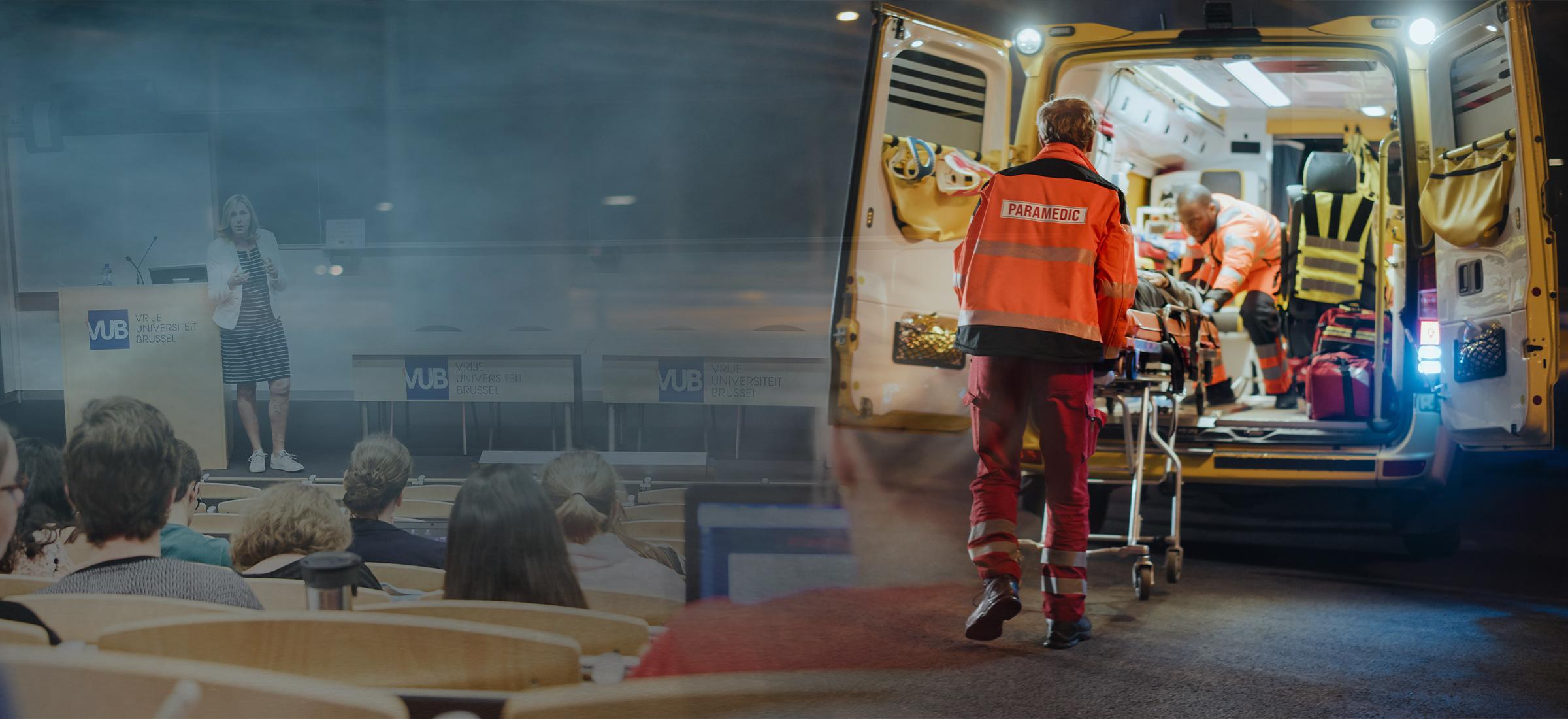
Educational quality of the programme
At VUB the quality of the education takes centre stage. This isn't something we say lightly: we scrutinise our programmes regularly to align them with changing student needs in a rapidly changing society.
This public information is part of VUB’s quality assurance and was ratified by the Academic Council on 09/12/2024.
Strenghts of the programme
- A unique advanced master: the European Master in Disaster Medicine (EMDM) is the only programme in disaster medicine and health disaster management worldwide at an advanced master level.
- Cultural diversity: the large cultural diversity among students and staff promote lateral thinking and in-depth discussions on ethical matters.
- Highly qualified and dedicated staff: the staff has extensive experience, both in/with? research as well as in working in the field. There is a strong interrelationship between the programme and the professional field, including a large international network of alumni.
- Continuous quality improvement: annual questionnaires regarding all aspects of the programme provide the teaching staff with crucial feedback needed to optimise the learning experience.
- E-learning platform: the e-learning platform allows for self-directed study under faculty guidance to learn the core content of the programme. Together with the readily accessible teaching staff the platform guarantees a high level of interaction between both teachers and students.
- Two-week residential course: to apply the knowledge and insights gained through e-learning, a two-week residential course is organised including debates, interactive workshops, simulation exercises, culminating in a full-scale exercise with the army, Red Cross and other disaster relief and service departments.
Opportunities
- Increased Accessibility for Students from Low-Income Countries: The lack of a grant programme limits access to students from low and middle-income countries, regions that could benefit most from disaster medicine expertise. Exploring grant opportunities and adjusting fee structures could improve accessibility.
- Strengthening Student Support: Introducing a study load measurement system to ensure that ECTS credits accurately reflect the workload would help students manage their time more effectively. Additionally, providing more support for thesis completion is an area that could be enhanced.
- Staff Diversity: further enhancing the diversity of staff by actively recruiting from low and middle-income countries and different cultural backgrounds, in both teaching and management positions of the programme will both enrich the programme and aid the distribution of disaster medicine expertise across the globe.
- The ethical considerations and safety issues humanitarian workers are facing can be made more explicit within the curriculum.
Current developments
- Curriculum Enhancement: The programme is actively integrating a new approach to its key module, the Riceland Game, embedding it across different units. This pilot project is expected to optimize the curriculum and foster more cohesive learning.
- Joint PR Strategy Development: The programme is developing a comprehensive public relations strategy to enhance its visibility and reputation. This strategy leverages the strengths of the partner universities and aims to attract a wider audience.
Where do we get this information from?
As institution we routinely ask our students to give their honest opinion about the study programme during their academic career. We also consult our professors and assistants and gauge the expectations in the future field of work. We receive structured feedback from our former students and compare our programmes with others at home and abroad. Through a Peer Review every six years an expert panel endorses the programme’s assets and can recommend some actions. Lastly, the Education Quality Council takes a formal decision about the quality and functioning of a programme.
Quality Cycle
Each programme follows a six-year quality cycle. The timeline below shows the schedule for this particular programme.
